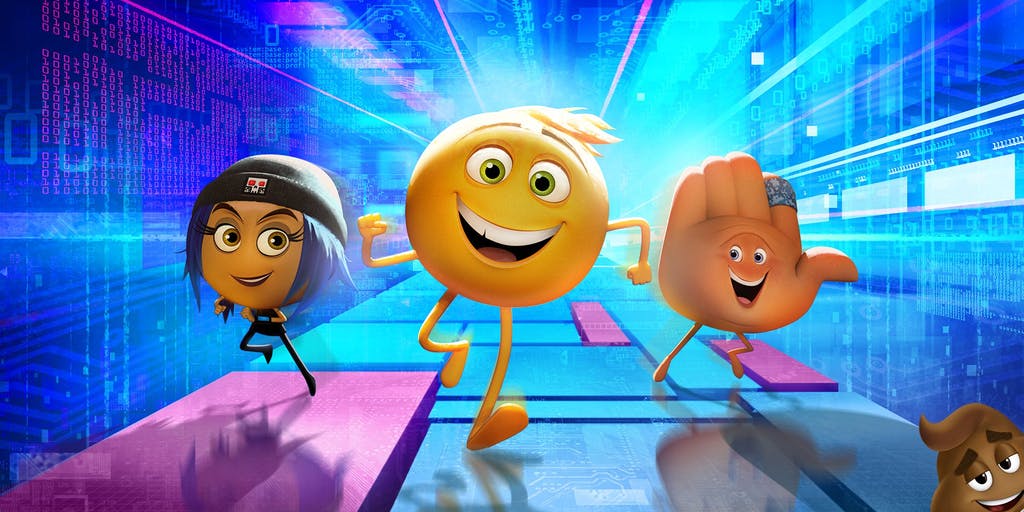The Emoji Movie sucks in a depressing way I’ve never seen before. It has all the trappings of children’s animated movies, like bright colors, an annoying comedic sidekick, and a quest filled with challenges along the way, but the weight of all the product placement broke its spirit. It’s sad to see Hollywood care so little about the average moviegoer that they would put together such an original corporate cash grab.
I’ve heard people compare the Emoji Movie to Inside Out because both look at the inner workings of a teenager’s mind, the former through his cellphone and the latter through her psyche. I was reminded of Wreck-it Ralph as well because of how familiar characters from video games were an easy way to make a connection with a young audience, who may not care enough to learn about your movie but will definitely have their eye drawn if they already know and love the characters in it. Those video game characters have star power in their own right. Phone apps, on the other hand, do not.
That’s why the Emoji Movie looked so eerily similar to a Disney animated feature on the outside while not having any emotionally intelligent writing on the inside. It was all a farce to stuff as many apps into the movie’s plot as possible, and most of it was just plain boring. I don’t appreciate the fact that this movie still got made with an A-list cast and everything despite all the laughter it received when production was announced. Hollywood executives believed in it when nobody else did, and the idea that youth today are so addicted to their phones that this movie speaks to a cultural zeitgeist or something makes me sick. I learned in a class that adults were concerned by teenagers in the 1950s for using landlines 24/7 to talk to their friends, so I’m convinced that putting down young people for using technology to deepen their relationships is an age-old sign of fear of change. That doesn’t make the Emoji Movie more timely, though, or universal; just cheap. Unfortunately, I can think of other examples of entertainment that were just vehicles for advertising.

The notorious animated move “Foodfight!” ripped off the Toy Story franchise in 2002 with the plot of food logos coming to life at night in a supermarket. Charlie Sheen starred as a dog detective who has to save the day when a femme fatale voiced by Eva Longoria from a generic brand takes over the store with the help of fellow Nazis(!) from the same company and tries to replace brand-name food products and their logos, i.e. nearly all of the other characters. It’s gross that a movie for little kids is teaching them that cost-effective products that are just as good as the national brands are evil and killing big brands, or big business for the owners of those brands, anyway. Thankfully, the film’s animation was stolen and apparently never re-done, so what looks like its first draft went straight-to-DVD in 2012. This is a decade after the celebrities in it were in their prime, but due to the stupid plot and abundance of sexual innuendo between the canine and the evil woman I doubt many people will hear about it.

Another example of this genre I can think of is the anime Sanrio Danshi, literally Sanrio Boys in Japanese. This show is about a group of high school boys who all love Sanrio products, like Hello Kitty and friends. The main character, Kota Hasagawa, is embarrassed to have other people know he’s a guy who likes cute stuffed animals until by happy coincidence he meets other boys who are huge fans of Sanrio, too. The show was created by Sanrio itself (who would have guessed?) and I’m bitter that a positive message like men can like delicate things, too, is being used just to market their products. I felt completely pandered to with such a cute concept, and find it interesting that this show has a different view on economics than Foodfight! by showing buying as a positive way to express what you’re like on the inside.
The Emoji Movie is more realistic in that buying only really comes up at the end when the boy who owns the phone tries to get it fixed. Still, it was a waste of my time to watch. I hope the movie industry tries to think more about originality and creativity soon, but seeing how many box-office hits are sequels in franchises, I won’t hold my breath.


